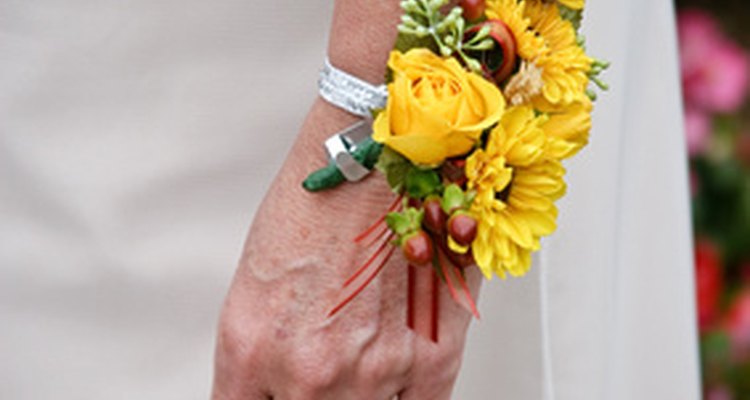
Corsages and boutonnieres add elegance to a celebration, wedding or formal dance. A corsage is worn by a woman, either on the left side of the dress or on the wrist, and the boutonniere is worn by the man on his left lapel. The colors and designs of the flowers either match or accent each other and unify the couple for the occasion.
Definition of Boutonniere

The word, boutonniere comes from the French, but the English call it the “buttonhole.” The boutonniere usually is one flower bud or single flower that can stand alone, or be surrounded by greenery, filler or ribbon. This is worn by a man. Traditionally the flower was looped through the lapel buttonhole on the left side of a man’s tuxedo or suit coat. If the jacket does not have the buttonhole, then the flower is pinned on the lapel.
Definition of Corsage
The word corsage comes from the French word for bodice. Corsages are usually three or more clusters of flowers and can be arranged with greenery, filler and ribbon. The corsage is an arrangement of flowers worn by a woman on the left side of her dress. It can also be a wrist corsage, where the flowers are attached to a wide ribbon or elastic band worn on the wrist.
History
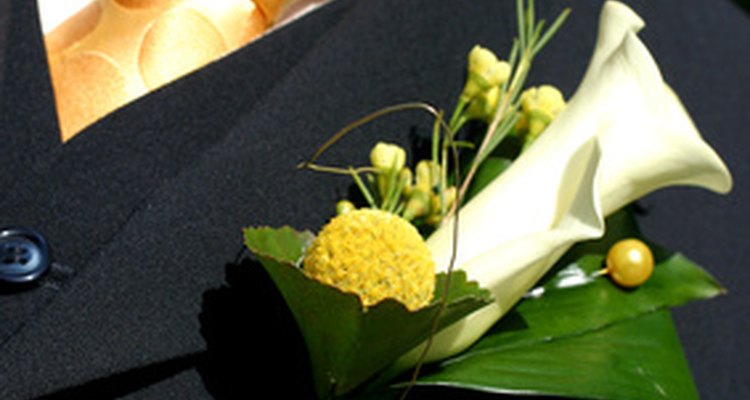
People started wearing wreaths and garlands in the Grecian-Roman era, and continued through the middle ages. In the 18th century the English adapted the practice and introduced the nosegay and boutonniere to help ward off evil spirits and repel infectious disease. It also helps ease the bad smells that were found in various parts of the culture. Eventually it became a fashion statement. In the 1940s, Hollywood leading men put on the boutonniere to go out and it caught on for a time as a gentleman’s accessory. Now both boutonnieres and corsages are worn at weddings, proms and other formal occasions.
Kinds of Flowers
In earlier decades the majority of corsages and boutonnieres were made up of carnations and gardenias. Currently the popular choices include sweetheart (mini) or standard roses, orchids, lilies, stephanotis, tulips and other small flowers such as cornflowers and freesia. To make a fashion statement today, some men are designing contemporary boutonnieres out of metal, herbs or “found” objects.
Size
Most boutonnieres should be as large as a golf ball. If the single flower is small, it can be enhanced by greens, berries, baby’s breath or other filler. Most floral designers suggest a corsage be an odd number of flowers; either three or five, depending on the size of the flowers. An odd number is more aesthetically pleasing to the eye.
Related Articles

What Does the Corsage Symbolize?
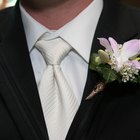
The History of the Boutonniere

What Do Women Pirates Wear?

How to Make a Corsage for a Man

Etiquette for Wedding Buttonholes

What Do Chinese Women Wear?

What Do Wedding Ushers Wear?

What Is an African Kufi Hat?

What Is a Slave Bracelet?

What Is the Traditional Dress Color for ...
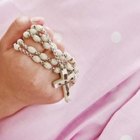
Mexican Wedding Traditions
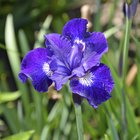
What Does a Purple Iris Symbolize?

Hat Trends of the Seventies
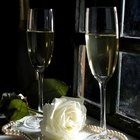
Ideas for a 31st Year Anniversary Gift

How to Match Your Date for the Prom

Brooch Vs. Pin

Traditional Chilean Wedding Attire
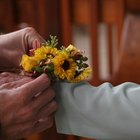
Corsage Flowers & Meanings

How to Wear an Arabic Headdress

Why Do Guys Give Girls Flowers?
References
Writer Bio
Nellene Teubner Plouffe is a writer who started her journalism career as a reporter and columnist for the "Orange County Register" newspaper in 1992. In 1995, Teubner Plouffe received a first-place award in column writing from the California Newspaper Publishers’ Association. She graduated with a Bachelor of Arts in sociology from the University of California, Santa Barbara.
Photo Credits
wrist corsage wedding yellow flower image by Paul Retherford from Fotolia.com